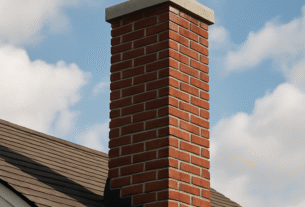With increasing environmental awareness, almost everyone in Australia is looking for ways to become more energy efficient. People want to do everything to conserve energy not only to reduce environmental impact but also to save money in the long run.
The building industry is recognised as contributing significantly to Australia’s carbon footprint and environmental impact. Therefore, the government has introduced various standards and star-rating systems, such as the NABERS Rating, to enable the construction of energy-efficient homes.
These star-rating systems help measure residential buildings’ energy efficiency and determine whether they meet the pre-specified sustainability standards.
So, how can you make your home more energy efficient? This article discusses some super easy ways to increase the energy efficiency quotient of your home in Australia.
Look Out for Bad Habits
Many don’t know that their daily bad habits can quickly add up, like boiling a whole kettle when making just a cup of coffee or leaving lights on when not in the room.
Being energy conscious and working on your bad habits around the house can help you reduce your house’s energy consumption and save on your energy bills.
Improve the Insulation
Improving the insulation is another vital thing you should work on to make your home more energy efficient and achieve a higher NABERS Rating.
During the cold winter days, your house could be letting out a lot of heat without good insulation. It could increase the energy cost and could be detrimental to the environment.
Always have proper insulation to prevent such a situation, whether by deploying stripping or other insulating techniques throughout your home. You can caulk or foam air leaks around doors, floors, windows, ceilings, walls, attic, crawl space, and even basement.
Tend to Your Furnace
The best way to tend your furnace for an energy-efficient home is to install a new high-efficiency furnace that uses the least energy.
Alternatively, you can make your older model more efficient by regularly cleaning and maintaining it. In addition, consider replacing filters every three months to let air move quickly into your home while prolonging the furnace’s life.
Consider Replacing Your Windows
Windows in the house can cause you to lose a lot of heat during winter and cool air during summer. It can be detrimental when it comes to your house’s energy costs over the year. Moreover, older windows might not be as energy efficient as you would want.
Consider replacing your older windows with double-panel windows and other vinyl frames instead of single-pane windows with aluminium frames.
Moreover, ask the professionals to tint your windows and open your blinds to let natural sunlight enter your house.
Update Your Hot Water System
Out-of-date water systems can significantly drain resources. Typically, your hot water system uses more energy than all other electrical appliances combined.
So, to improve your home’s energy rating, consider exploring modern, energy-saving hot water systems. Updating the hot water system can also enhance NABERS rating for offices and apartment buildings.
Seal Ductwork
Hot indoor air can escape from your house through joints in ductwork. It means you are spending more on energy costs to heat places you don’t want to, like an unfinished basement, and not getting heat to the areas you want to, like upper floor rooms.
You can avoid this situation by applying heating-vent tape to all the visible joints in the ductwork. Since NatHERS assessment is now an integral part of BASIX, this can help you with obtaining your BASIX certificate.
Use Compact Fluorescent Bulbs (CFLs)
When you have outdated light bulbs in your home, you might find that your house uses much more energy than you should.
It is the reason more homeowners in Australia are switching to compact fluorescent bulbs (CFLs). You might find them a bit more upfront, but you will save on energy costs over time. Moreover, CFL bulbs last up to 12 times longer than regular bulbs.
Don’t Overuse Appliances
Even after installing energy-efficient appliances in your home, you shouldn’t overuse them. For instance, you shouldn’t use the heater too much during winter unless necessary.
In addition, keep your thermostat in a comfortable setting instead of changing it constantly. Changing the setting too much can use far more energy than the appliance should.
Install Solar Panels
If you have a decent budget, installing solar panels can significantly improve your home’s energy rating during the NatHERS assessment.
Apart from residential structures, you can also improve your NABERS energy rating when you consider solar panel installation for office buildings and apartments.
Installing them on your rooftop can help cut down on electricity expenses because of their capability to produce their own electricity.
Use Ceiling Fans
Using ceiling fans to cool bedrooms, especially at night, is another energy-efficient technique. Moreover, ceiling fans with a ‘reverse’ option can also help in cold months as they will push hot air into your rooms.
Plant Shady Landscaping
Planting great landscaping outside your home can aid in protecting the building from scorching sun during summer days and chilly winds during winters.
The trees and their leaves will direct cool air towards your home during summer, making it comfortable to live inside your home.
Moreover, shady landscaping will reduce your reliance on HVAC systems, lowering energy consumption and cost. This can bring up both NatHERS and NABERS energy ratings.
Automate Appliances Usage
A smart thermostat can reduce heating and cooling costs in Australian homes by a significant percentage. These systems work by learning your habits and adjusting the temperature accordingly.
For example, if you habitually turn the home’s temperature down before bed at 11 p.m., a smart thermostat will learn and start making the adjustments automatically.
Moreover, homeowners can control smart appliances from an app, regardless of whether they are at home or not.
Automating the lighting can also reduce energy consumption and save on energy costs. To automate lighting, you can install dimmer switches and motion sensors that turn off when you are in the room and off when you leave the room.
Concluding Words
Energy-efficient homes are essential to conserve energy and reduce unnecessary energy consumption, demand for non-renewable resources, and greenhouse gas emissions.
Such homes provide homeowners with significant savings over conventional houses. If you want to increase your home’s energy efficiency quotient and successfully clear the NatHERS assessment, following the above-discussed best practices is a good solution.
It’s advisable to make a few changes now and then to create a more energy-efficient home without overwhelming yourself.




